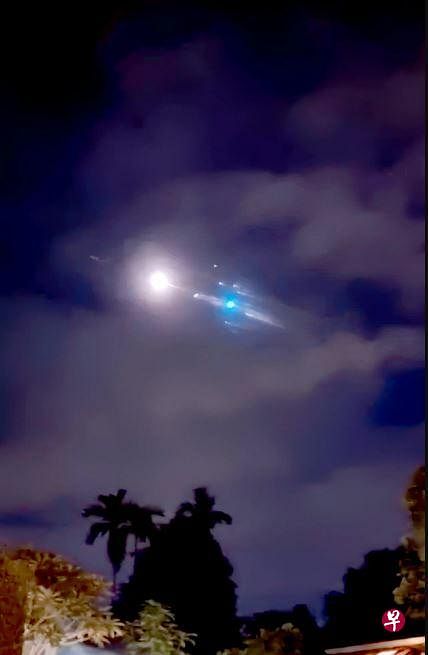
(Beijing / Washington / Kuching Comprehensive News) Both the aerospace departments of China and the United States have confirmed that the last wreckage of the China Long March 5 Yao San Load Rockets entered the atmosphere in the early morning of Sunday (July 31), in the Indian OceanFall back to the earth.Almost at the same time, Malaysia Sarawan found that the rocket fragments cut through the atmosphere and burned the light.
China Manned Aerospace Engineering Website released a short message on Sunday: "After monitoring and analysis, around 0.55 on July 31, 2022, the last wreckage of the Long March 5 Yao San Launa Rockets has re -entered the atmosphere, and it has fallen.The district is located in the east longitude of 119.0 ° and 9.1 ° north latitude.
Fragments may fall where the earth is on the earth.
According to Voice of the United States, the American Space Command said on Sunday that China Long March 5 Yao San Launa Rockets re -entered the Indian Ocean at 12:45 pm Eastern time.However, the National Aeronautics and Space Agency (NASA) pointed out that Beijing has not shared the "specific trajectory information" that the fragments may fall on the earth.
Nelson, director of the National Aeronautics Aerospace Administration, said: "All aerospace countries should follow the best practice of established, and do their best to share such information in advance in order to reliably predict the risk of potential fragments ...This is very important to use space responsibly and ensure the safety of people on the planet. "
Nielsen also said that the United States and most other space countries usually use additional costs to design rockets to avoid large -scale and uncontrolled returning to the atmosphere.This is most of the aircraft of the Space Station "Skylab" of the American Aeronautics Station in 1979, falling from the track and splashing from Australia.
In 2020, the fragments of China Long March 5B landed in Kotda, West African countries, and damaged several buildings in the country, but there were no reports of casualties.In May 2021, after Beijing's last flight of the Long March Rockets was stuck or re -entering the window, NASA and other institutions accused China of being opaque.
According to the China News Agency, the Long March 5 Yao Three Load Rockets equipped with the "Ask Sky" experimental cabin was successfully launched at the Wenchang Space launcher in China on July 24.Since the successful launch, the China Manned Aerospace Engineering Office has repeatedly released the Last Wreckage of the Long March 5 Yao Third Load Rockets.
Malaysia: Most of them burned fragments and fell in Suluhai
In the morning of Saturday (July 30) from the capital of Sarawak, Malaysia, Malaysia, from the afternoon of Saturday (July 30) to the early morning of Sunday (July 31), the "Meteor Shower" cut through the night sky and excited the local people.Malaysia National Space Agency (MySA) confirmed that these lights were burned by the Chinese Long March 5 Rocket Barrier fragments.
The Malaysian Aerospace Bureau issued a statement on Sunday that Malaysia led the airspace at about 55 am that day discovered the China Long March 5 of the La "Rockets, and most of the fragments fell on Sulu Sea."When the rocket fragments enter the earth's atmosphere, the burning fragments have also crossed the Malaysian airspace, and can be found in multiple areas such as Sarawak."
The Malaysian Aerospace Bureau said that although the Long March 5 Yao Three Load Rockets is huge, most of the fragments have been burned when they enter the atmosphere, and only smaller fragments may fall to the surface.



